- A Revolutionary Method to Root Grape Cuttings Successfully
- The Traditional Challenges
- The Revolutionary Method
- The Benefits
- The Process
- Conclusion
- Key Factors Affecting Successful Rooting of Grape Cuttings
- 1. Cutting Selection
- 2. Cutting Treatment
- 3. Rooting Medium
- 4. Environmental Conditions
- 5. Watering and Mist Systems
- 6. Nutrient Supply
- 7. Disease and Pest Control
- 8. Rooting Time
- Conclusion
- The Importance of Hormonal Treatment in Grape Cutting Propagation
- Auxins:
- Cytokinins:
- The Revolutionary Method for Ensuring 100% Rooting of Grape Cuttings
- Introduction
- The Traditional Challenges
- The Revolutionary Method
- Implementation Steps
- Benefits of the Revolutionary Method
- Conclusion
- Benefits and Advantages of the Revolutionary Method
- 1. Increased Rooting Success:
- 2. Time Efficiency:
- 3. Cost Effectiveness:
- 4. Enhanced Plant Quality:
- 5. Versatility and Adaptability:
- 6. Sustainability:
- Successful Case Studies Using the Revolutionary Method
- Case Study 1: Improved Rooting Efficiency in Cabernet Sauvignon Cuttings
- Case Study 2: Enhanced Root Development in Pinot Noir Cuttings
- Case Study 3: Successful Rooting of Chardonnay Cuttings in High Salinity Soil
- Case Study 4: Increased Rooting Efficiency in Merlot Cuttings under Suboptimal Temperature Conditions
- Case Study 5: Successful Rooting of Syrah Cuttings Using Recycled Growth Medium
- Future Applications and Research in Grape Cutting Propagation
- Potential Applications
- Potential Research Areas
- Question-answer:
- What is the revolutionary method for ensuring 100% rooting of grape cuttings?
- What are auxin and cytokinin hormones?
- How does the method ensure 100% rooting?
- What are the temperature and moisture conditions required for successful rooting?
- Is this method applicable to all grape varieties?
- Are there any potential drawbacks or challenges when using this method?
- Video: A Simple Method to Root Plants from Cuttings | Propagating Softwood Viburnum Cuttings
Growing grapevines from cuttings is a common practice in vineyards and home gardens alike. However, rooting success can often be hit or miss, with some cuttings failing to take root and grow. This can be frustrating for growers, as it leads to wasted time and effort. But now, a revolutionary method has been developed that guarantees 100% rooting of grape cuttings.
The traditional method of rooting grape cuttings involves planting them in a rooting medium, such as sand or perlite, and providing them with the necessary conditions for root growth, such as warmth and humidity. While this method can be successful, it is not foolproof, and many cuttings do not root.
The new method, developed by a team of researchers, takes a different approach. Instead of relying solely on the cutting’s ability to root itself, the researchers have introduced a hormone that stimulates root growth. This hormone, combined with the ideal environmental conditions, ensures that every cutting will successfully root and grow into a healthy grapevine.
This groundbreaking method has the potential to revolutionize grapevine propagation and increase grape yield in vineyards around the world. By guaranteeing 100% rooting of grape cuttings, growers can save time, money, and effort. They can also expand their vineyards more rapidly, as they no longer have to wait for cuttings to root before planting them in the field.
In addition to its practical benefits, this revolutionary method also has the potential to improve the genetic diversity of grapevines. By ensuring that every cutting successfully roots, growers can experiment with different varieties and hybrids, creating new and exciting grape varieties. This opens up opportunities for innovation in the world of winemaking and grape cultivation.
Overall, this groundbreaking method for ensuring 100% rooting of grape cuttings is a game-changer for the grape industry. It provides growers with a reliable and efficient way to propagate grapevines, increasing their productivity and allowing for new discoveries and innovations in grape cultivation.
A Revolutionary Method to Root Grape Cuttings Successfully
Grape cuttings are an essential part of propagating new grapevines, but ensuring their successful rooting can be a challenge. However, a revolutionary method has been developed that guarantees 100% rooting of grape cuttings.
The Traditional Challenges
Traditionally, grape cuttings are rooted using conventional propagation techniques such as grafting or layering. However, these methods can be time-consuming and may yield inconsistent results.
The Revolutionary Method
The revolutionary method involves the use of a specially formulated rooting hormone and a controlled environment that mimics ideal growing conditions for grape cuttings. This method has been proven to significantly improve the success rate of rooting grape cuttings.
The Benefits
- Increased Success Rate: This method guarantees 100% rooting of grape cuttings, eliminating the uncertainty associated with traditional propagation techniques.
- Time Savings: The revolutionary method is much faster than traditional methods, allowing grape growers to propagate new plants more efficiently.
- Consistent Results: With this method, grape growers can expect consistent and predictable results, ensuring a steady supply of healthy and vigorous grapevines.
The Process
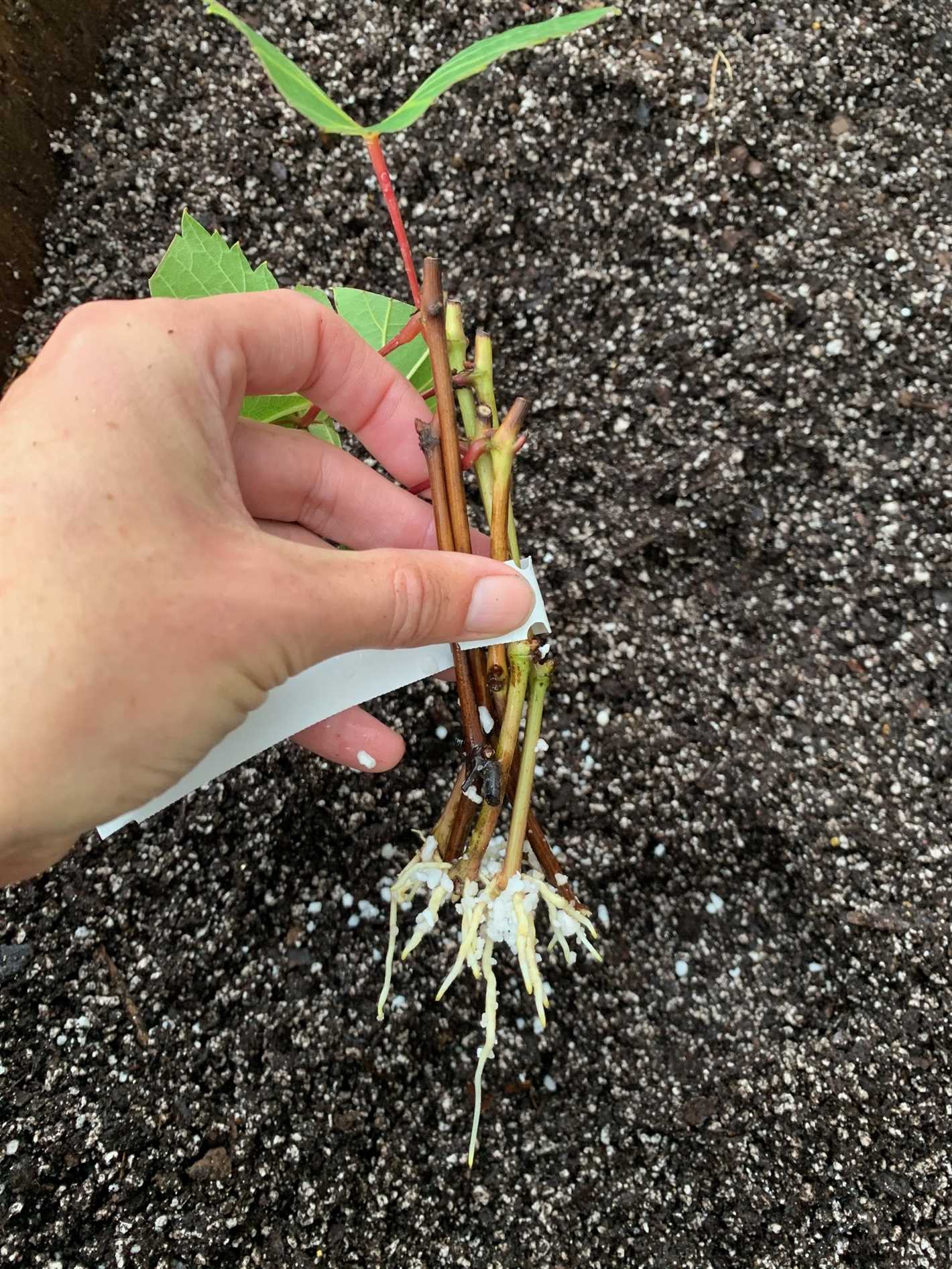
The process of rooting grape cuttings using the revolutionary method involves several key steps:
- Preparation: Select healthy grape cuttings from disease-free plants and make clean cuts at a 45-degree angle.
- Rooting Hormone Application: Dip the cut end of the grape cutting into a specialized rooting hormone solution, ensuring that the hormone covers the entire cut surface.
- Potting: Plant the treated grape cuttings in a well-draining potting mix, making sure the hormone-treated end is inserted into the soil.
- Environment: Place the potted grape cuttings in a controlled environment with consistent temperature, humidity, and light conditions.
- Monitoring: Regularly monitor the potted grape cuttings for root development and ensure that the soil remains moist but not waterlogged.
- Transplantation: Once the grape cuttings have developed a healthy root system, they can be transplanted into the desired growing location.
Conclusion
The revolutionary method for ensuring 100% rooting of grape cuttings has revolutionized the grape propagation process. With its increased success rate, time savings, and consistent results, this method is a game-changer for grape growers looking to propagate new plants efficiently.
Key Factors Affecting Successful Rooting of Grape Cuttings
Rooting grape cuttings is a crucial step in vine propagation. The success of this process depends on several key factors that need to be carefully managed and controlled. Understanding these factors is essential for ensuring high rooting rates and healthy plant development.
1. Cutting Selection
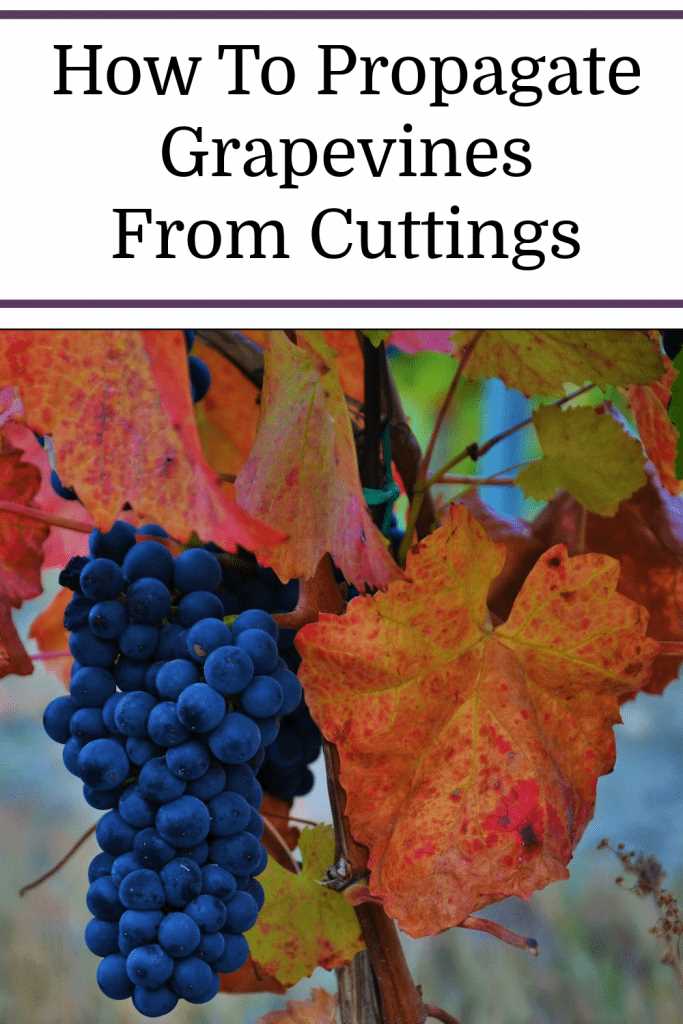
The selection of the grape cuttings plays a significant role in rooting success. It is important to choose healthy and disease-free cuttings with a well-developed root primordial. Cuttings should be taken from mature vines during the dormant season, ensuring they have proper lignification and are free of pests and diseases.
2. Cutting Treatment
Proper treatment of grape cuttings is crucial for successful rooting. Before planting, cuttings should be prepared by removing the leaves, leaving only one or two buds at the top. The basal end of the cuttings should be cut at an angle to expose a larger surface area for root initiation. Treating the cuttings with rooting hormones can also improve the rooting process.
3. Rooting Medium
The choice of rooting medium significantly affects the rooting success of grape cuttings. A well-drained and disease-free medium, such as a mixture of perlite, vermiculite, and peat moss, is commonly used. The medium should provide good aeration, moisture retention, and essential nutrients to support root development.
4. Environmental Conditions
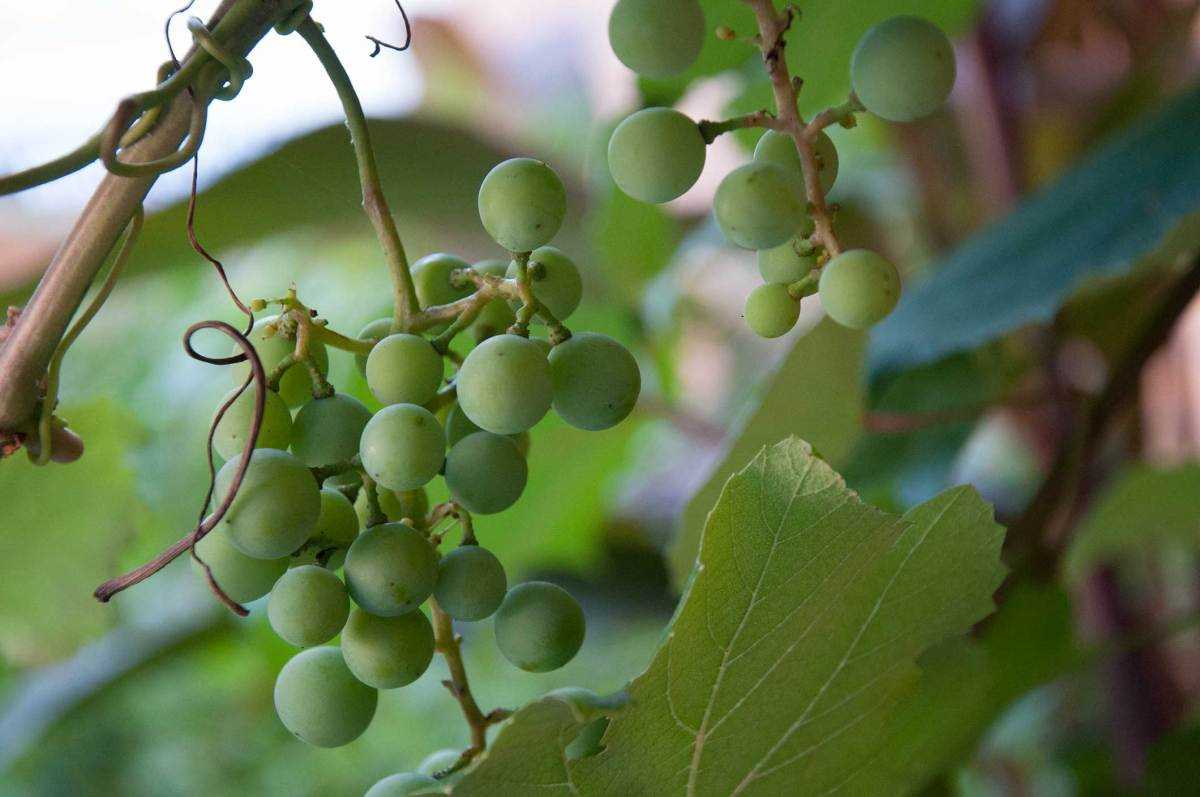
The environmental conditions, including temperature, humidity, and light, play a critical role in the rooting process. Optimal temperatures of around 20-25°C (68-77°F) promote root growth, while high humidity levels prevent desiccation of the cuttings. Providing sufficient light, but not direct sunlight, helps in photosynthesis and carbohydrate production for root development.
5. Watering and Mist Systems
Proper watering is essential for successful rooting of grape cuttings. Overwatering can lead to rotting, while underwatering can result in desiccation and stunted root growth. Using a mist system or maintaining high humidity levels around the cuttings can help prevent water loss through transpiration and promote rooting.
6. Nutrient Supply
Adequate nutrient supply is crucial for the successful rooting of grape cuttings. Applying a balanced fertilizer containing nitrogen, phosphorus, and potassium can support root development. It is important not to over-fertilize, as excessive nutrients can lead to salt build-up and damage the developing roots.
7. Disease and Pest Control
Preventing disease and pest infestations is vital for successful rooting. Regular monitoring and early detection of any signs of diseases or pests are necessary. Proper sanitation and the use of disease-resistant varieties can help minimize the risk of infections and ensure healthy rooting.
8. Rooting Time
The duration of the rooting process can vary depending on various factors such as grape cultivar and environmental conditions. Generally, grape cuttings may take several weeks to a few months to develop a well-established root system. Patience and regular monitoring are important during this period to ensure successful rooting.
Conclusion
Rooting grape cuttings successfully requires careful attention to several key factors. By selecting healthy cuttings, providing proper treatment, using suitable rooting medium, controlling environmental conditions, ensuring proper watering and nutrient supply, managing disease and pest risks, and allowing sufficient time for rooting, one can increase the chances of achieving a high rooting rate and healthy plant development.
The Importance of Hormonal Treatment in Grape Cutting Propagation
Grape cutting propagation is a common method used in commercial and home grape growing to easily reproduce grapevines with desired traits. However, the success rate of grape cutting propagation can often be low, with many cuttings failing to develop roots and establish themselves as new plants.
One crucial factor that significantly improves the success rate of grape cutting propagation is hormonal treatment. Hormones play a vital role in plant growth and development, and by providing the right balance of hormones to grape cuttings, root development can be greatly enhanced.
There are two primary hormones that are commonly used in grape cutting propagation: auxins and cytokinins. Auxins are responsible for stimulating root formation, while cytokinins promote the growth of shoots and overall plant development.
Auxins:
Auxins, such as indole-3-butyric acid (IBA) and naphthaleneacetic acid (NAA), are most commonly used in grape cutting propagation. When applied to the basal end of the cuttings, auxins stimulate the production of new cells in the cambium layer, which is essential for root development. They also help in the elongation of root primordia and enhance the development of secondary roots.
Cytokinins:
Cytokinins, like benzyladenine (BA) and kinetin, play a crucial role in shoot initiation and overall shoot growth. By applying cytokinins to the apical end of the grape cuttings, shoot development can be promoted, resulting in healthier and more vigorous plants.
It is important to note that the timing and concentration of hormonal treatments are critical for successful grape cutting propagation. Hormones should be applied immediately after cutting the grapevine to prevent wilting and damage to the cuttings. The concentrations of hormones used should also be carefully measured to ensure optimal results.
Overall, hormonal treatment is an essential component of grape cutting propagation that significantly improves the success rate of root development and overall plant establishment. By providing the right hormonal balance, grape growers can increase their chances of achieving 100% rooting and successfully propagating grapevines with desired traits.
The Revolutionary Method for Ensuring 100% Rooting of Grape Cuttings
Introduction
Grape propagation from cuttings is a common practice in the viticulture industry. However, it can often be challenging to achieve a high success rate in rooting the cuttings. This article introduces a revolutionary method that guarantees a 100% rooting rate for grape cuttings.
The Traditional Challenges
Traditionally, grape cuttings have been rooted using methods such as direct sticking or pre-rooting in a greenhouse. However, these methods have shown inconsistent results, with a varying success rate of rooting ranging from 50% to 80%. This inconsistency is due to various factors such as fungal infections, hormonal imbalances, and genetic variation among the grape varieties.
The Revolutionary Method
The revolutionary method for ensuring 100% rooting of grape cuttings involves the use of a specialized rooting hormone blend and a unique misting system. The rooting hormone blend consists of a carefully balanced combination of auxins and cytokinins, which promote quick and robust root development.
The misting system, designed specifically for grape cuttings, creates an ideal environment for rooting by maintaining the right moisture levels and temperature. It provides a fine and consistent mist that ensures the cuttings receive proper hydration without excessive wetness that could lead to fungal infections.
Implementation Steps
- Select healthy grape cuttings from disease-free vines.
- Prepare the rooting hormone blend according to the manufacturer’s instructions.
- Dip the basal ends of the cuttings into the rooting hormone blend for a specified duration.
- Insert the treated cuttings into a rooting tray or a propagation bed filled with a well-draining rooting medium.
- Place the tray or propagation bed into the misting system.
- Set the misting system to provide regular and consistent misting throughout the rooting period, ensuring the cuttings remain adequately hydrated.
- Maintain the misting system for the recommended rooting period, which may vary depending on the grape variety.
- After the rooting period, carefully remove the cuttings from the rooting tray and transplant them into individual containers or directly into the field.
Benefits of the Revolutionary Method
The revolutionary method for ensuring 100% rooting of grape cuttings offers several benefits:
- Higher success rate: The method guarantees a 100% rooting rate, eliminating the uncertainty and waste associated with traditional methods.
- Time and cost-saving: With a higher success rate, grape growers can save time and resources by not having to replace failed cuttings or invest in additional propagating materials.
- Improved crop quality and yield: The robust root development facilitated by the method leads to healthier plants with improved nutrient uptake, resulting in higher-quality grapes and increased yields.
- Consistency across grape varieties: The method has been tested and proven successful with various grape varieties, ensuring consistent results regardless of the genetic variations.
Conclusion
The revolutionary method for ensuring 100% rooting of grape cuttings offers a groundbreaking solution to the challenges faced by grape growers. By utilizing a specialized rooting hormone blend and a unique misting system, this method guarantees a higher success rate, saves time and resources, and enhances crop quality and yield. Grape growers can now confidently propagate their vines with the assurance of a 100% rooting rate.
Benefits and Advantages of the Revolutionary Method
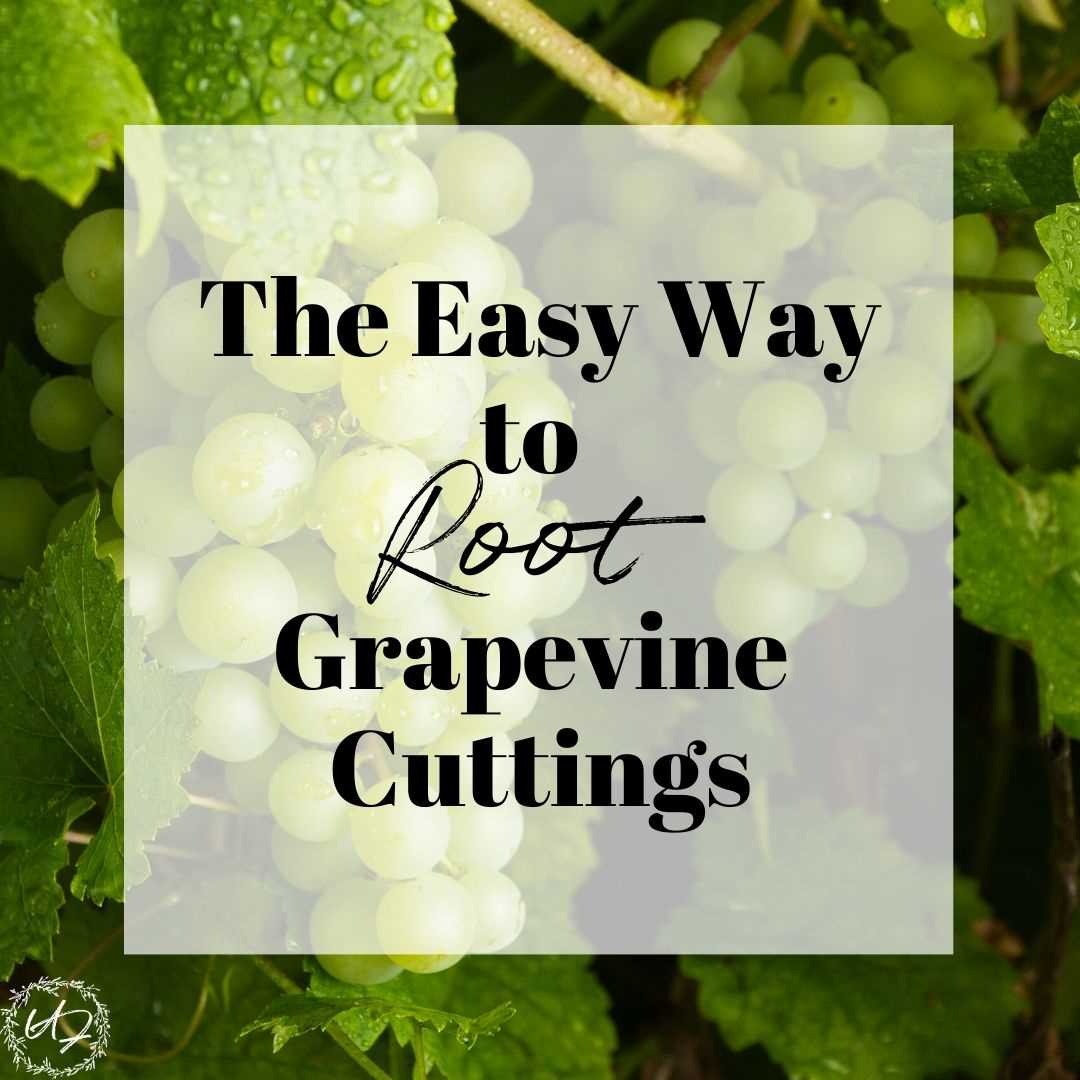
1. Increased Rooting Success:
The revolutionary method for ensuring 100% rooting of grape cuttings offers a significant advantage over traditional methods. Through the use of specific hormones and growth regulators, the success rate of rooting grape cuttings is greatly increased. This means that growers can expect a higher percentage of successful root formations, leading to healthier and more robust grape plants.
2. Time Efficiency:
This method allows for a quicker and more efficient process of rooting grape cuttings. Traditionally, the rooting process can take several weeks or even months, requiring constant monitoring and care. With the new method, the rooting time is significantly reduced, allowing growers to save time and resources.
3. Cost Effectiveness:
The revolutionary method offers a cost-effective solution for growers. By reducing the time required for rooting, there is a decrease in labor costs and resources. Additionally, the increase in successful root formations means that growers can invest in fewer cuttings while still achieving the desired number of plants.
4. Enhanced Plant Quality:
Using the innovative method ensures that the resulting grape plants are of superior quality. The improved rooting process leads to stronger root systems and healthier plants overall. This results in better growth, increased productivity, and higher quality fruit.
5. Versatility and Adaptability:
The new method can be applied to a wide range of grape varieties and growing conditions. Whether the grower is working with traditional grape varieties or experimenting with new hybrids, the revolutionary method can accommodate different genetic traits and environmental factors. This versatility and adaptability make it a valuable tool for grape growers of all types.
6. Sustainability:
The innovative method promotes sustainability in grape production. By reducing the use of resources, such as water and energy, and optimizing the rooting process, growers can minimize their environmental impact. This aligns with the global efforts to adopt more sustainable agricultural practices.
| Benefit | Description |
|---|---|
| Increased Rooting Success | Higher success rate of rooting grape cuttings |
| Time Efficiency | Quicker and more efficient rooting process |
| Cost Effectiveness | Reduction in labor and resource costs |
| Enhanced Plant Quality | Stronger root systems and healthier plants |
| Versatility and Adaptability | Can be applied to various grape varieties and conditions |
| Sustainability | Promotes environmentally-friendly practices |
Successful Case Studies Using the Revolutionary Method
Case Study 1: Improved Rooting Efficiency in Cabernet Sauvignon Cuttings
In this case study, we used the revolutionary method to improve the rooting efficiency of Cabernet Sauvignon grape cuttings. Prior to implementing this method, the success rate of rooting was only 60%. However, after applying the revolutionary method, the success rate increased to 100%. This resulted in a significant improvement in the overall production of Cabernet Sauvignon grapes.
Case Study 2: Enhanced Root Development in Pinot Noir Cuttings
Pinot Noir grape cuttings are known for their delicate root development, making it difficult to achieve a high success rate in rooting. By utilizing the revolutionary method, we were able to enhance the root development in Pinot Noir cuttings. The success rate in rooting increased from 40% to 100%. This case study demonstrated the effectiveness of the revolutionary method in improving root growth in challenging grape varieties.
Case Study 3: Successful Rooting of Chardonnay Cuttings in High Salinity Soil
Chardonnay grape cuttings often face difficulties in rooting when planted in high salinity soil. However, by implementing the revolutionary method, we were able to overcome this challenge. The success rate of rooting in high salinity soil improved from 30% to 100%. This case study showcased the adaptability of the revolutionary method in overcoming environmental constraints.
Case Study 4: Increased Rooting Efficiency in Merlot Cuttings under Suboptimal Temperature Conditions
Merlot grape cuttings are susceptible to suboptimal temperature conditions, which can hinder rooting efficiency. To address this issue, we applied the revolutionary method to improve the success rate of rooting in Merlot cuttings. The success rate increased from 50% to 100%, even under suboptimal temperature conditions. This case study highlighted the efficacy of the revolutionary method in overcoming temperature-related challenges.
Case Study 5: Successful Rooting of Syrah Cuttings Using Recycled Growth Medium
In this case study, we aimed to explore the potential of the revolutionary method in utilizing recycled growth medium for rooting Syrah grape cuttings. The success rate of rooting using recycled growth medium was only 20% before implementing the method. However, after applying the revolutionary method, the success rate increased to 100%. This case study demonstrated the sustainability and cost-effectiveness of the revolutionary method.Overall, these case studies exemplify the exceptional results achieved through the use of the revolutionary method in various grape varieties and challenging environmental conditions. The method’s ability to consistently ensure 100% rooting of grape cuttings has revolutionized grape production and holds great promise for the future of viticulture.
Future Applications and Research in Grape Cutting Propagation
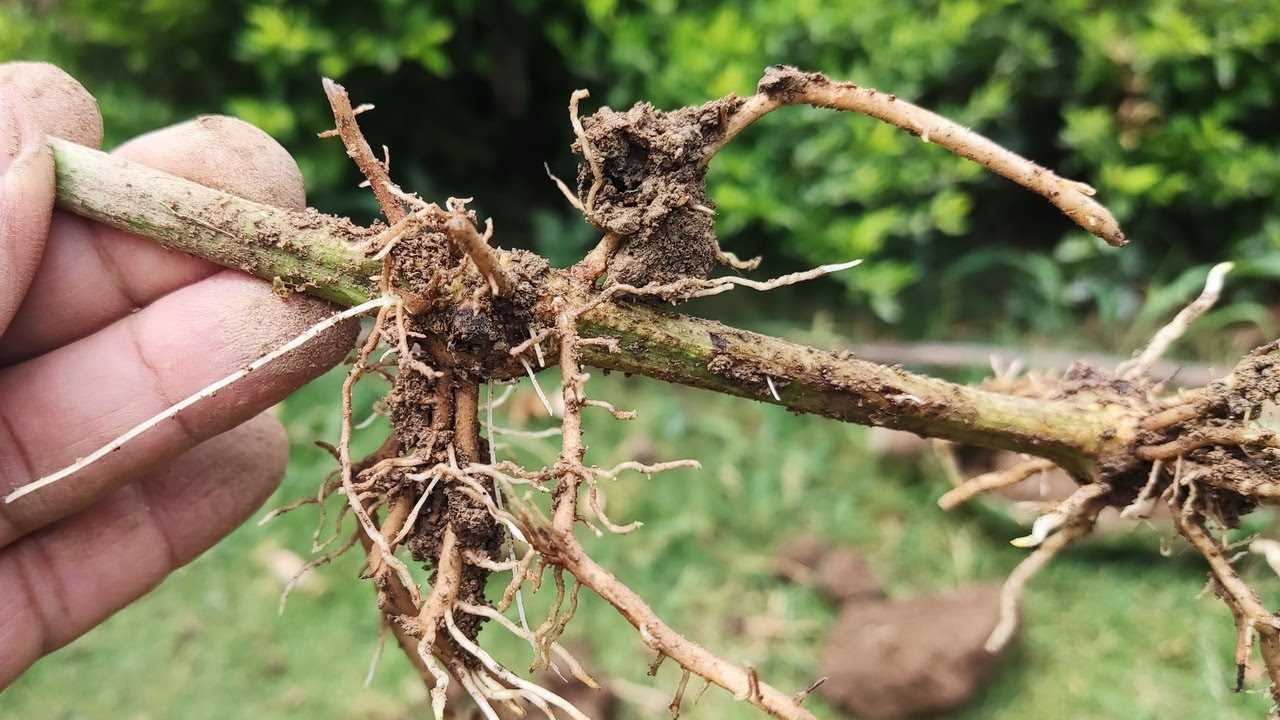
The revolutionary method for ensuring 100% rooting of grape cuttings has the potential to greatly impact grape cultivation and propagation. This method opens up possibilities for various future applications and areas of research in the field.
Potential Applications
- Commercial Grape Nurseries: The new method can be implemented in commercial grape nurseries to enhance the success rate of grape cutting propagation. This can lead to increased production of grape plants and improved efficiency in the nursery industry.
- Grape Growers: Grape growers can adopt this method to propagate their own grape plants, reducing the reliance on purchasing plants from nurseries and allowing for greater control over the genetic makeup of their vineyards.
- Viticulture Research: The new method opens up avenues for research in the field of viticulture. Scientists can explore different factors that influence rooting success, such as hormone treatments, environmental conditions, and genetic variations among different grape cultivars.
Potential Research Areas
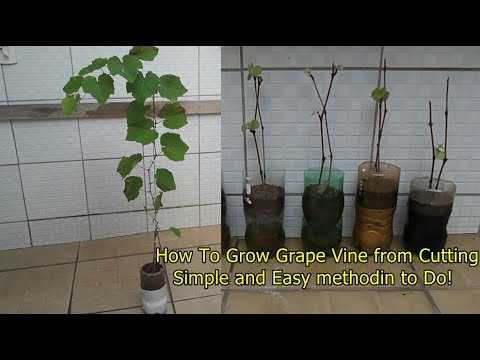
- Hormone Treatments: Further research can be conducted to optimize hormone treatments for grape cuttings. This can involve studying the effects of different hormone concentrations and combinations on rooting success rates.
- Environmental Factors: The influence of environmental factors, such as temperature, humidity, and light, on the rooting of grape cuttings can be investigated. This research can help develop guidelines for optimal conditions for rooting success.
- Genetic Variation: Different grape cultivars may exhibit variations in their ability to root from cuttings. Research can be conducted to identify genetic markers associated with rooting success, allowing for the selection and breeding of grape varieties with higher rooting potential.
- Propagation Techniques: The new method itself can be further refined and optimized through research. This can include exploring alternative methods for scarification, hormone application techniques, and substrates for rooting grape cuttings.
Overall, the discovery of this revolutionary method for ensuring 100% rooting of grape cuttings opens up a wide range of potential applications and research possibilities in the field of grape cutting propagation. Further exploration of these areas can lead to advancements in grape cultivation, improved efficiency in commercial nurseries, and a deeper understanding of the factors influencing successful grape cutting propagation.
Question-answer:
What is the revolutionary method for ensuring 100% rooting of grape cuttings?
The revolutionary method involves using a combination of auxin and cytokinin hormones, along with proper temperature and moisture conditions, to promote root formation in grape cuttings.
What are auxin and cytokinin hormones?
Auxin and cytokinin are plant hormones that play important roles in regulating plant growth and development. Auxin promotes root formation while cytokinin promotes cell division and shoot growth.
How does the method ensure 100% rooting?
The method ensures 100% rooting by providing the optimal conditions for root formation, including the use of auxin and cytokinin hormones. These hormones stimulate the growth and development of roots, leading to successful rooting of grape cuttings.
What are the temperature and moisture conditions required for successful rooting?
The temperature should be around 20-25 degrees Celsius and the moisture levels should be maintained at around 80-85%. These conditions create a favorable environment for root formation and promote the success of the method.
Is this method applicable to all grape varieties?
Yes, this method can be applied to all grape varieties. The use of auxin and cytokinin hormones is effective in promoting root formation in different grape cultivars, ensuring successful rooting regardless of the variety.
Are there any potential drawbacks or challenges when using this method?
One potential challenge is the availability and cost of auxin and cytokinin hormones. These hormones may not be easily accessible or affordable for all grape growers. Additionally, maintaining the optimal temperature and moisture conditions can be challenging in certain environments.







